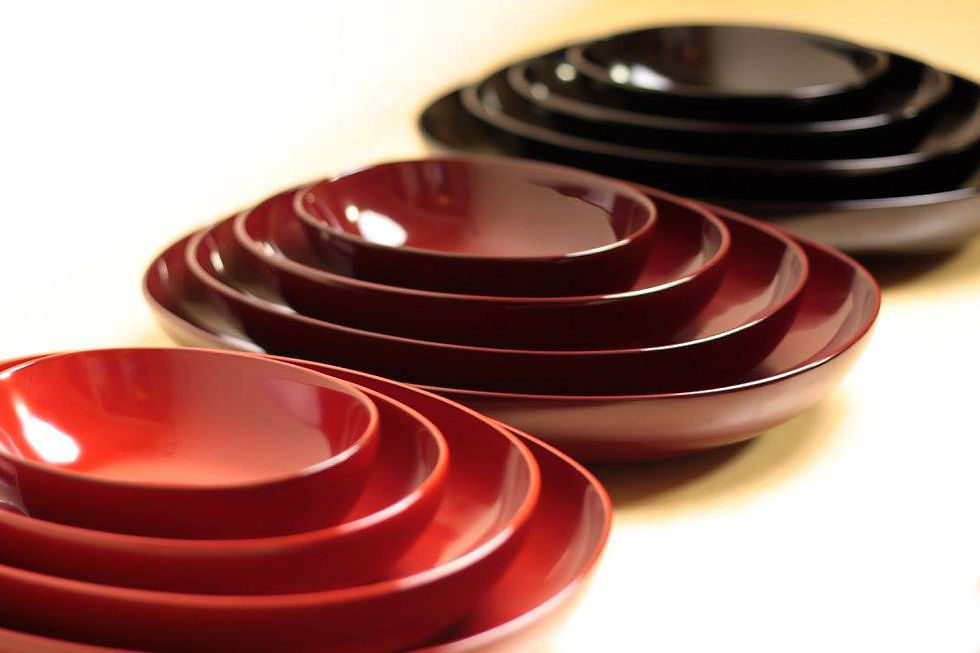Ishikawa - Kingdom of Crafts (Part 1)
- felix994
- Jan 12, 2017
- 3 min read
We were invited by the Ishikawa Prefectural Government of Japan to visit some companies prior to an exhibition planned in January 2017. This took place in late August and although this is long overdue, we hope to document this important visit there.


We arrived in Komatsu and promptly made our way to Wajima City. The route took us along the Chirihama Nagisa Driveway (40 minutes from Kanazawa city by car).

The weather was nothing short of spectacular and along this scenic route is the stretch of flat beach where vehicles can drive along the tight and compacted sand path.

From the coastine to the hinterland...the change in the scenary evokes some sense of calm somewhat..we could hear the sound of cicadas and not much else..

We finally arrived in Wajima and made a stop at the Wajima Kiroko Art Museum.

Kiroko?? Well, these are taken from various literature relating to the subject - "...Kirikos are huge lanterns with heights ranging from 4 to 15 meters. They are carried through the streets along with portable shrines called 'omikoshi'. At the festival climax, a special bonfire by the sea is lit, and Gohei (decorative strips of white paper used in Shinto rituals) that fall from the top are scrambled for by brave men wearing loincloths."

What is significant is that these beautiful Kiroko lanterns are painted in Wajima lacquer style used in Wajima Festival besides the regular display of Kirikos from different parts of Noto Peninsula used in different festivals.

We visited the first company that specialises in giving form to the original blocks of wood. Obviously like kids in a candy store, we were bombarded with the smell of various woods, the sight of uncountable prototypes that littered throughout the room and felt the incredible textures that beckoned to be touched...

A pre-lacquered O-Toso set. This consists of a Sake pot called Cho-Shi and three sized small cups called Sakazuki. The O-Toso set is used in various ceremonies but is always an indispensable part of the New Year's celebration in Japan. Completely made out of wood and other natural materials (eg. bamboo) using traditional techniques and time honoured skills. An heirlooms that is usually passed down from generation to generation. Check out the spout!

Great cut away view.

Of course, nothing is ever complete with the touch of the human hand. Here in this process, plates that are lovingly sanded to its final stage.

And finally, the famed high quality Urushi lacquerware of Wajima.
Urushi is the sap of the urushi tree, which is widely found across East Asia. With strong adhesive properties and a glossy vibrant look, urushi hardens upon drying, and becomes resistant to acids, alkalis and high temperatures, making it extremely durable.

Urushi is unique in that it requires exposure to specific temperatures and humidity in order to cure and produce a layer of lacquer. This creates a layer that can withstand acid, alkali, alcohol and high temperatures. Urushi also has adhesive preperties and is therefore completely different from any other synthetic coating. There are many traditional nuri crafts in Japan but among these, Wajima-nuri has been officially recognized as the best due to its remarkable quality.

Of all the steps involved in the production of these pieces, the process of applying the lacquer is the most complex, and there are as many as 124 steps to attain Wajima-nuri’s exceptional durability. To ensure the consistent high quality, labour is carefully organized with each stage of production being carried out by skilled craftsmen. The inherent value of Wajima-nuri lies in the fact that whilst it is both practical, it is also a form of art and culture.

The completed O-Toso set that also has gold leaf ("Makie" technique) applied.


































Comments